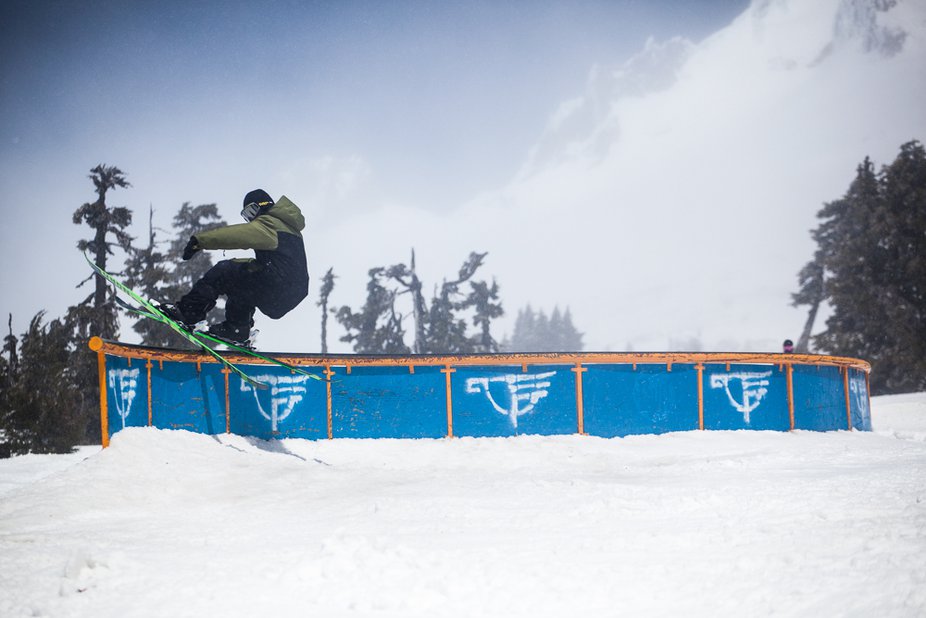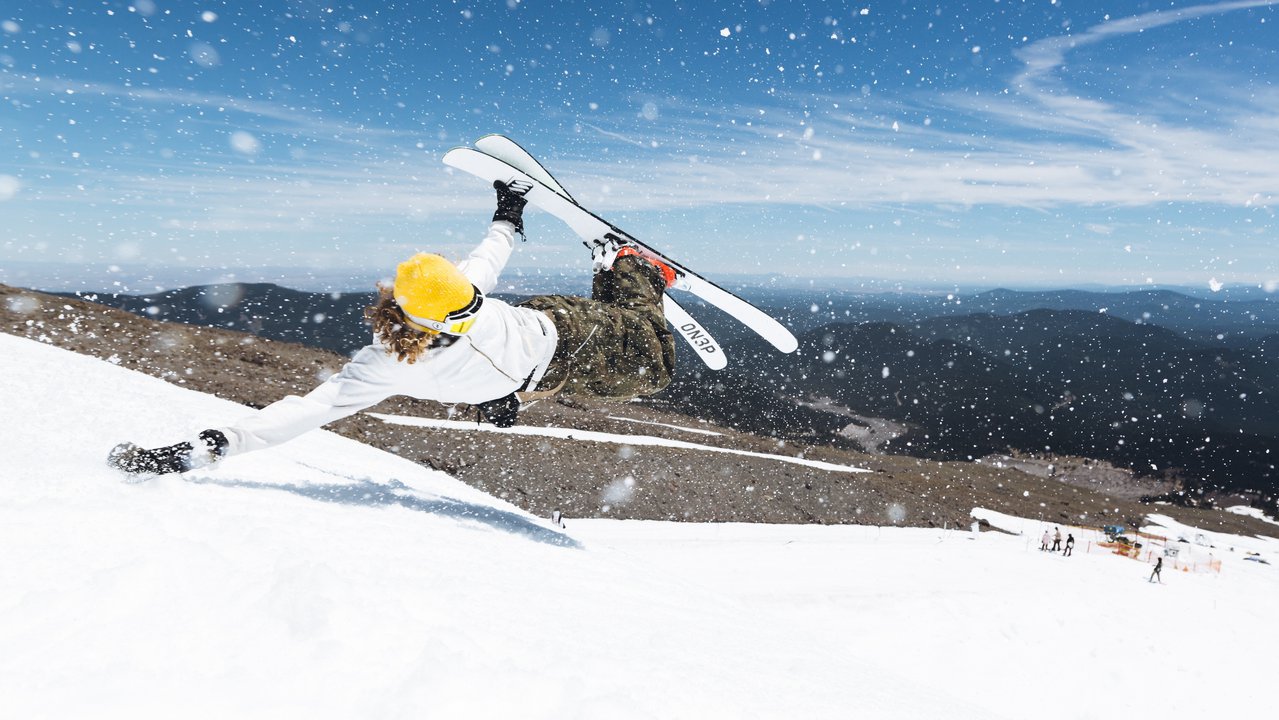The skiing media, sponsors, and casual skiers alike foist god-like status upon professional skiers, building a cult of talent and personality that separates them from us mere mortals. These are the skiers that open and close ski movies, cover our walls, and stand on podiums. They are sport stars and rock stars, but in what arena aside from action sports can a no-name kid post a video to instagram surpassing the skills of the sports best? It's impossible in most other sports. You can't step onto a football field against a professional team the way you can step to the same jumps or urban features of skiing's pros. While the '“playing field" in action sports like skiing has always been somewhat level, the democratization of viewership thanks to technology has further blurred the definition of professional, and also made it harder to make a living as a skier. This begs the question, are professional skiers a dying breed?
At their core, professional skiers are marketing assets. Sponsorship is a contract that trades influence and visibility to the brand for cash and product for the skier. It is easy to get caught up in the emotional attachment to these stars and brands, but it's important to remember that at the end of the day sponsorship is a business investment.
https://www.instagram.com/p/Bbz0e54F_fi/
Marketing spends are driven by the ability to prove a return on that investment. In other words, does the money a brand spend on promotion return as sales? In the past, this connection was more abstract, driven by numbers like attendance at events, and circulation numbers of magazines. For example, it's difficult to determine the value having Tanner Hall ride on Armada skis at the X Games. Nowadays, a brand can put a dollar value on the impressions garnered from a social media post. This ability to digitally attribute marketing investment has completely changed the game, inside and outside of skiing.
https://www.instagram.com/p/BdDvjr3FdOZ/
The proliferation of social media does not diminish the talent of skiing's top riders, but rather allows many other talented skiers access to an equal audience. In this way, skiers who are very good, but maybe not at the top of the game, can reach as many viewers via the internet. Video parts can be watched all year long on Newschoolers, Instagram, and all over the web, not just in ski films that come out once per year. Likewise, social media makes it easier to '“make it" by bolstering your follower count, or grabbing your slice of viral fame. This has increased the number of skiers out there promoting brands for free or next to nothing by sharing and tagging photos, creating a huge pool of assets that brands would have had to pay the skiers and content creators for in the past.
This democratization of content spreads out a ski brand's marketing budget more thinly among more skiers, or sometimes encourages brands to transition away from a traditional pro team altogether. One recent example is at 4FRNT, where owner Jason Levinthal did not renew the contracts of big name skiers Kye Petersen and Wiley Miller. Levinthal acknowledged the financial aspect of the decision as well as the change saying. “We're going to be supporting more athletes. It's not just going to be five guys, where we say 'look up to these five people because we pay them a bunch of money and we want you to aspire to be like them.' We're going to be working with more local heros as well, people who are also out there using our product everyday, who are just as inspiring." Boiled down, a more local strategy not only puts the skis in the hands of local influencers, but is cheaper. We can't speak to 4FRNTs sponsorships directly, but in general it is far cheaper to give out skis for free to many skiers rather than pay a couple of skiers full salaries.
https://www.instagram.com/p/Bcnx7jzAP7m/?hl=en&taken-by=kyepetersen
While more skiers getting discounted and free skis is great for those individuals, it lets them get their foot in the door, it also makes it harder to make the next step in monetizing their skiing and create a real career. For those skiers on these flow sponsorships, it is becoming even more difficult to get companies to pay them the money they need for things like rent, health insurance, food, and travel. This is the double-edged sword of social media's effect on the ski industry, if there are fewer skiers making it to the sustainable career status, will we ever see more superstars? The talent is still there, and the money has not dried up completely, especially from non-endemic sponsors like Red Bull, yet the question remains valid.
Take a skier like Lupe Hagearty for example. Lupe has steadily been making a name for himself over the years, putting out awesome video content, and dabbling with some bigger names and bigger film crews. Last year Lupe qualified for free healthcare because his income was under $16,000. His sponsors were Nordica Skis, Planks Clothing, D-Structure, Slytech/Shred Optics and Carinthia Mount Snow. This year he got dropped by sponsors Slytech/Shred Optics and Carinthia Mount Snow, so he had to pick up a summer painting job to fill the gap. When talking to Lupe, he said he definitely sees a changing landscape that is leaving skiers like him hustling to make ends meet, “I think it is totally fair to say the industry now is not the what it used to be for athletes five or ten years ago. Especially before Instagram and the whole social media explosion."
While there are certainly brands that are holding on to their big name athletes and legacy stars, this is a trend that has been in motion for several years as teams have shrunk or disappeared altogether. It would be wrong to say that the top skiers in the world do not still provide value as marketing assets to these brands that can' be quantified by double-taps on Instagram. However the number of these stars is shrinking as the older generation retires or moves on and isn't replaced.

For this older generation, social media is not only changing the economics of their profession, but their motivation. Skiing is not isolated in this trend, snowboarders, skaters, etc have seen the same changes. Longtime pro skateboarder Chris Haslam captured this in a recent interview with Jenkem Magazine, saying “Social media really drains the life out of my own motivation and inspiration to do stuff for a video part because any second of the day I'll look on Instagram and see ridiculous moves. There are dudes that do flatground in front of their house and they have like 5 digit amount of followers. Then it's like, what the hell am I doing? I'm stressing over this trick that I can't get and nobody is going to care about. It's been a struggle to find any real concrete motivation and inspiration to get more footage because I want to work toward something with value."
https://www.instagram.com/p/BbBJRsagyRv/?hl=en&taken-by=sethmorrison36
With ski companies budgets being stretched more thinly, it is becoming ever-more difficult to build a career in skiing without non-endemic energy drink sponsors paying the bills. Social media creates more opportunity, yet also lessens the value of professional skiers. This changing digital nature of the ski industry creates a growing gap between the small and shrinking group of true professional skiers and the many sponsored riders that seek to build their lives around skiing. Young skiers will undoubtedly continue to keep skiing and surpassing the skills of legends of today, the question is, will anyone be paying them to do so?


Comments